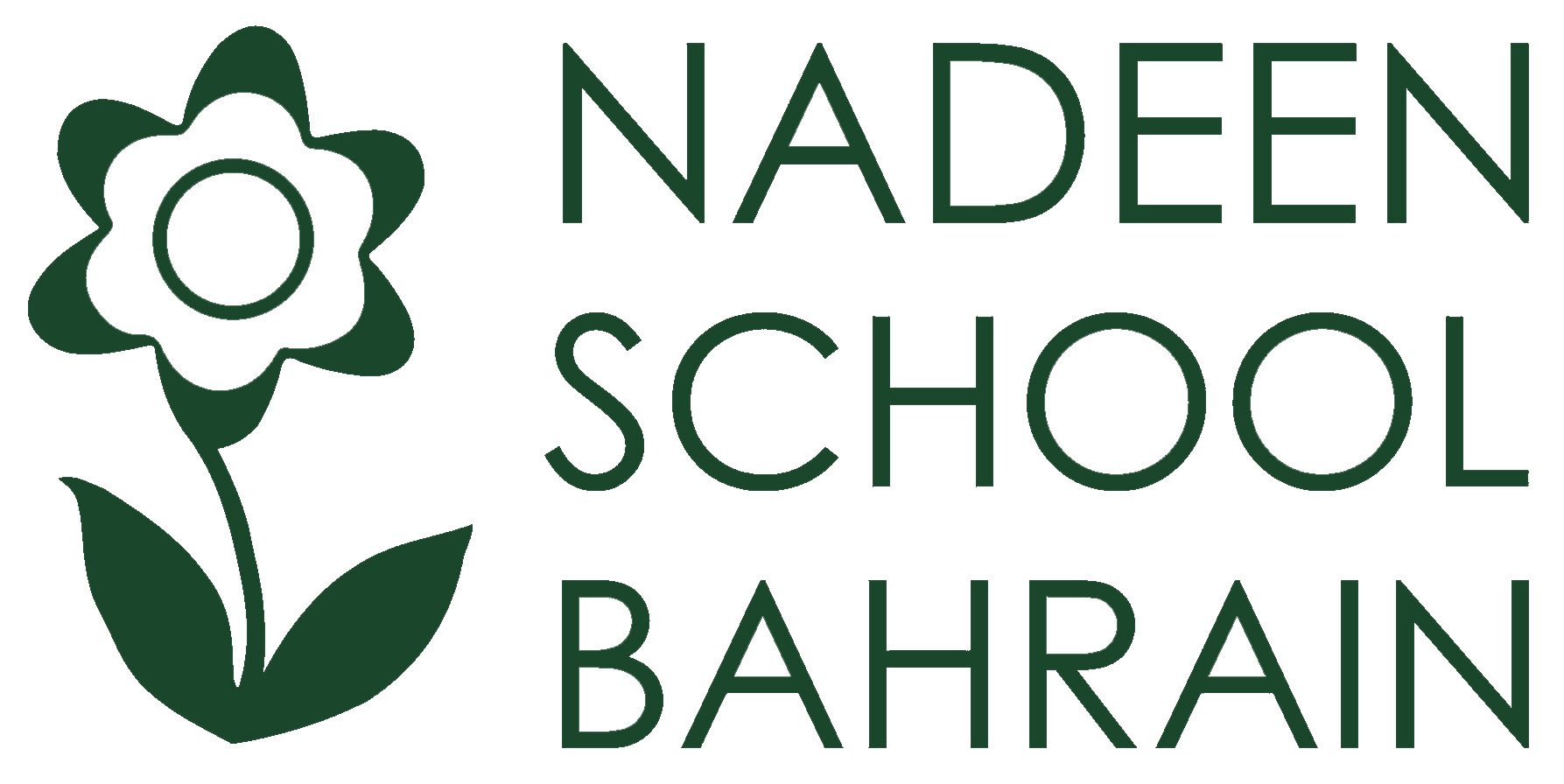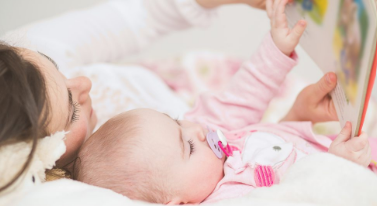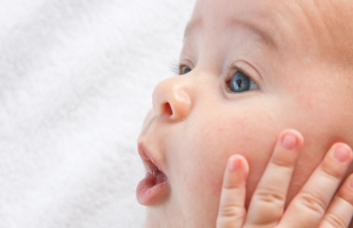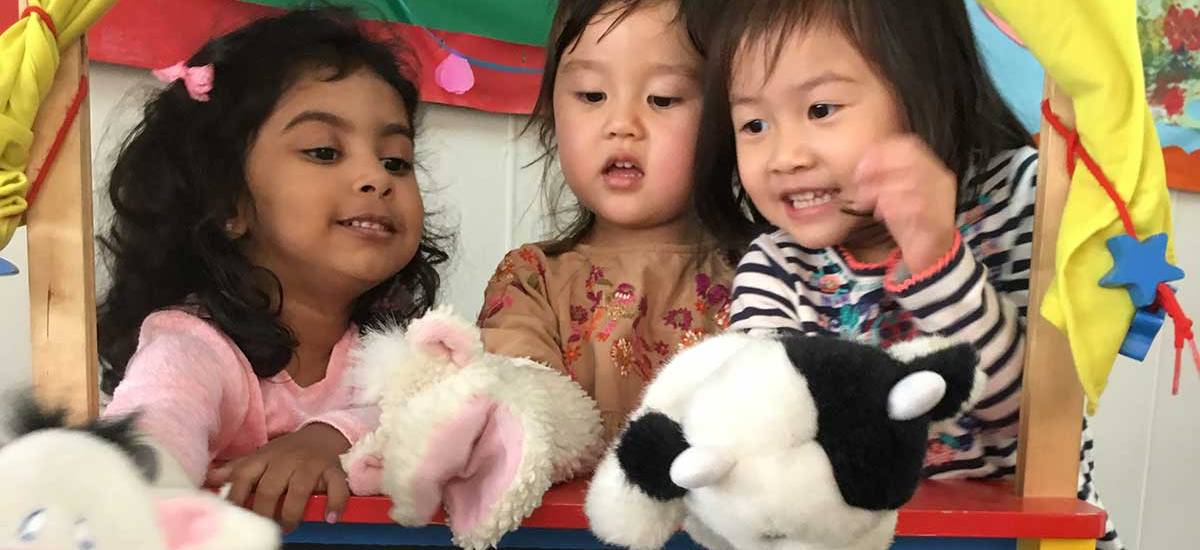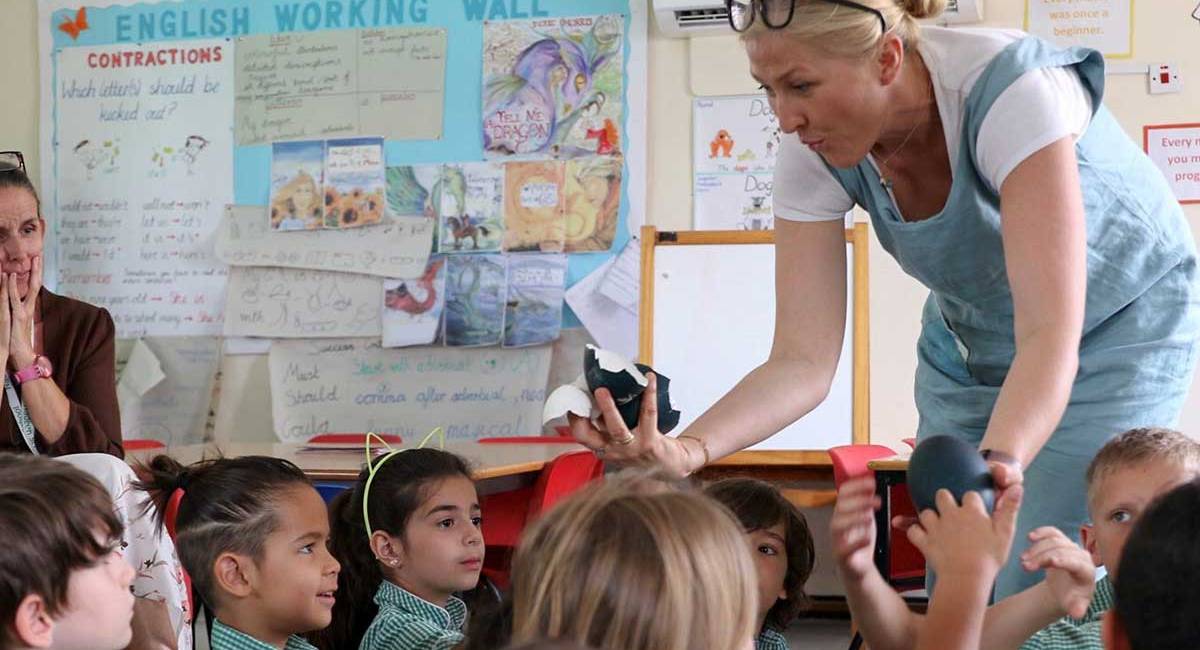Developing Infants Speech and Communication by Najat Shamsi
The ability to bond with your child is one of the most exciting elements of bringing your newborn home from the hospital. Communication is a key element in how a baby establishes relationships with parents and other members of the family. It is a common misperception that newborn babies have little interaction with people.
In fact, the first few months are among the most exciting times for an infant’s communication development. Their communication ability increases enormously over the course of a year, even before they speak their first words. Understanding the stages of communication development from birth to one year old might help you understand how your child develops social skills.
How babies communicate from 1 to 3 months
For an infant, the first three months are a time of great discovery. Infants are constantly absorbing their environment and responding to it, despite what a casual observer might assume that they are unable to do so at this age. According to research, oohs, ahs, and cooing are responses to environmental stimuli. Babies, much to the delight of parents, tend to find their smiles during this stage.
Babies at this age try to engage in “conversations” by making noises, smiling, and waiting for your response. Babies frequently smile or mimic your facial expression as you peer into their cribs or bassinets.
There is a lot you can do to encourage healthy communication development in babies at this stage because they bond and respond to the sound of their parents’ voices. As you care for your child, feel free to speak, sing, and coo. Respond cheerfully and enthusiastically to your child’s smiles and vocalizations.
Another simple way to encourage natural communication and language development is to tell your baby what you’re doing as you go about your daily routine. Inform your baby about what he or she is seeing in the room. As you hold, use, or bring familiar objects to your baby, identify and name them.
Ways to communicate with your baby at this age
- Teach positive tone, pacing, and taking turns by repeating your baby’s sound and waiting for them to make another. It is acceptable to occasionally raise your pitch or exaggerate your speech, but always speak at a normal adult pitch and use everyday words. This lays the groundwork for your child’s first words.
- Maintaining attention will help to reinforce early self-esteem. In other words, try not to interrupt or look away from your infant while he or she is “talking” or smiling with you. Showing interest increases your infant’s trust and encourages further conversations.
- Recognize changes in mood to acknowledge your child’s early sense of personhood. Babies, like everyone else, have days when they don’t want to coo or vocalize. They may even require a break from the constant sensory stimulation in their environment. These babies may simply need to be held, cuddled, or left to rest at times.
How babies communicate from 4 to 7 months
Babies this age are fascinated by the various sounds they can make with their mouths. Expect a lot of babbling and increased sound imitation. Without a doubt, these are a child’s first attempts at speech, and you should encourage them as much as possible.
As babies learn the value of tone, you may notice their voices rising or falling when they ask a question or make a statement. This happens at this stage because babies are learning the basics of communication through speech and language. Since babies are getting older, they will begin to use vocalizations (rather than just crying) to express themselves or get your attention.
Babies begin to associate words with meaning at this age. Babies begin to respond to their names, pause or look to their parents when told “no,” and recognize how words identify familiar objects. This is how babies learn how different sounds combine to form words and sentences in spoken language.
Activities to develop communication at this age
Babies at this age often respond enthusiastically to vocal games because this is the stage of ample playfulness. You can encourage communication development in several ways by using positive learning games:
- Use “call and response.” Babies this age enjoy it when their parents mimic their babbles and vocalizations. Imitate your child’s vocal expressions, and then reinforce natural speech development by saying simple (one or two syllable) words with the same sound.
- Hold “question and answer” sessions. Ask your baby a question, then listen intently and enthusiastically to whatever vocalization (“answer”) he or she provides. This lays the groundwork for the baby’s first conversations.
- Apply word games to everyday objects. Always refer to familiar people, favorite toys, and everyday activities. Simple sentences, speaking slowly, and waiting for a response are the most effective. For instance, hold up the object and inquire, “Do you want a [book]?” Asking simple questions and waiting for responses improves basic vocabulary and the give-and-take of conversing with others.
How babies communicate from 8 to 1 year old
At this age, babies may say “mama” or “dada” for the first time. Aside from speech milestones, this is an important time for body language development. Babies learn to express themselves through gestures such as pointing and shaking their heads. And be warned: children at this age closely observe their parents or caregivers in order to learn new words or gestures to imitate on their own, so pay attention to what you do or say!
They will also start repeating consonants or syllables in speech. Instead of disjointed babbling, you might hear a string of consistent consonant sounds like babababa (ideal for pairing with nursery rhymes like “Baa Baa Black Sheep”) and other distinct consonant sounds. “Ga” and “da” are also common syllable sounds. Moreover, babies at this stage can also understand and repeat many words or phrases before they can speak or repeat them. When asked, “Where is Mommy?” a child may turn toward their mother. A simple command or request, such as “Find the ball,” may also be able to be responded to by the child. Children usually react to their own names and pause or react to form words like “No” by now.
How to help the baby communicate
To help your baby make the most of this exciting stage in communication development, make language learning a holistic experience.
- Make simple requests that require the use of body language and identifiers. Your child should be able to respond to basic commands (“wave bye-bye,” “play peek-a-boo,” “say mama or dada”). Request that your child identify familiar objects (for example, “Where is your cup?”). Identifiers aid in the development of a child’s vocabulary comprehension. Body language exercises show how language, fine motor, and gross motor skills all work together to facilitate effective interpersonal communication.
- Make use of music. Children learn through memory and repetition when they sing nursery rhymes. These mimic the rhythm, cadence, and tempo of expressive language as well. Create songs about your child (Happy bathtime to you, happy bathtime to you, happy bathtime, sweet baby, happy bathtime to you.) You don’t have to be able to sing in tune or on key. Babies don’t pass judgment; they just want to hear your voice.
- Use enjoyable and entertaining quizzes. “What is that?” you ask, pointing to an object like a ball. Allow your child to point and wait for a response. The child will soon be able to connect the object to the answer.
The importance of reading
When children have the opportunity to play with and explore books and other written materials such as magazines, newspapers, take-out menus, markers, and crayons, they develop early literacy skills.
Here are some ways to use books to support language and literacy:
- Read lots of books. Reading with your baby fosters a love of reading and familiarity with books. Reading aloud also helps your baby’s vocabulary grow by providing them with numerous opportunities to hear new words and learn what they mean.
- Include books in your baby’s daily routine.
Read before napping or going to bed. During bath time, share plastic books. Bring books to the doctor’s office to pass the time.
- Read with zeal.
In the stories you read to your baby, use different voices for different characters. Babies enjoy it when adults are silly, and it makes book reading more enjoyable.
- Allow your baby to “read” in their own way.
Your baby may only sit still for a few pages, turn the pages quickly, or want to look at one picture before moving on. They might even prefer to mouth the book rather than read it! Follow your baby’s lead to make reading time enjoyable. This will foster their love of reading from the start.
- Repetition
Babies learn through repetition because it provides them with numerous opportunities to “figure things out.” When babies express an interest in a book or even a picture in a book, give them as much time as they need to look at the picture or hear the story over and over.
Literacy is a process that evolves over time, with each new skill building on the previous one. But keep in mind that literacy is more than just a skill; it is also a passion for books and the magic they provide.
Bilingualism
There is still much to learn about childhood bilingualism. What we do know is that children can learn two or more languages without difficulty during their childhood. We also know that learning a new language is often easier in the early years. Here are some additional considerations for parents:
- Babies progress at their own pace. Your child’s language skills may develop at a different rate than a monolingual child (who is learning only one language), but this may have nothing to do with the fact that they are learning two languages at the same time. Furthermore, research shows that children who are regularly exposed to a rich bilingual language environment develop in the same way as monolingual children.
- Maintain consistency in how you introduce your child to two languages. For example, you might only speak French to your baby while Dad only speaks English. Alternatively, you may only speak French at home and English elsewhere. What matters is that the language is used in everyday situations rather than as a “teaching” session.
- Be aware that your child’s vocabulary may develop at a different rate than that of a monolingual child. Children who learn two languages concurrently may have smaller vocabularies in one or both languages than children who learn only one language. Bilingual children, on the other hand, have the same number of words as monolingual children when both languages are considered. These early differences are frequently transient. Bilingual children usually catch up in their vocabulary development by the time they start school (if they hear both languages consistently).
Don’t be concerned about your child becoming confused by hearing two languages. They will start to figure it out on their own, and they will even use words from both languages in the same sentence at times. This does not imply that they are confused! It’s a perfectly normal part of growing up bilingual. So take pleasure in hearing your child explore and learn two languages.
Sign Language
Signing with babies with normal hearing does not appear to slow language development, according to studies. In fact, some research suggests that it may improve language skills. However, if you want to see results, you must learn and apply the signs yourself.
Interestingly, one reason signing may have a positive effect is that parents who sign with their baby spend more time communicating — watching their child and trying to understand what they are saying. This is something that every parent can do, whether or not they learn sign language.
Furthermore, parents who sign may be employing a technique known as “elaboration.” For example, when a baby makes a sign for more, the parent may say in response, “You want more juice? I’ll add more to your cup.” Again, whether you use signs or not, this is a great idea for all parents because it gives babies lots of new words to hear and learn.
If you pay close attention to your baby, you will notice that they are constantly signaling to you. When you stop playing peek-a-boo, they reach out and babble to let you know they want you to keep playing. Raising their arms means asking to be picked up. Responding to these signals helps their language skills as well as their emotional and social development.
To find out more about sign language, visit the website below
https://www.parents.com/baby/development/intellectual/intellectual-growth/
It is critical to remember that every child is unique, so some children may reach these milestones at different rates. What matters most about the activities you do with your baby is that they are enjoyable for both of you as well as being educational for your child. Consider a game or song that your child enjoys. What do you think this game is doing to help them develop their language and literacy skills?
References
7 Ways to Help Your Child’s Language Development. (2022, September 13). Parents. https://www.parents.com/baby/development/talking/9-ways-to-help-your-childs-language-development/
Samis, M. (2022, October 25). Supporting Language and Literacy Skills from 0-12 Months. ZERO TO THREE. https://www.zerotothree.org/resource/supporting-language-and-literacy-skills-from-0-12-months/
The Warren Center. (2021, October 7). How Do Babies Communicate? The Warren Center | Non-profit Organization in Richardson, Texas. https://thewarrencenter.org/help-information/communication/how-do-babies-communicate/
